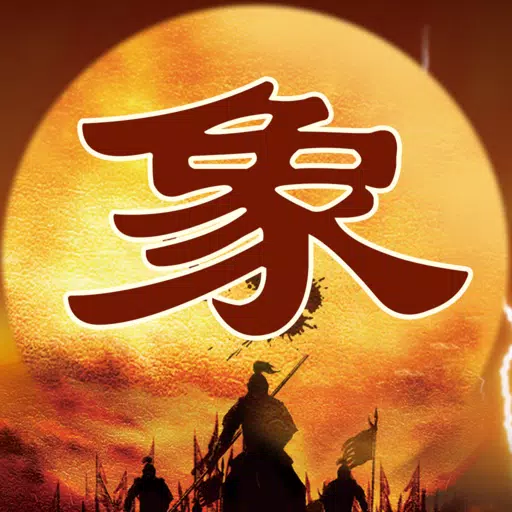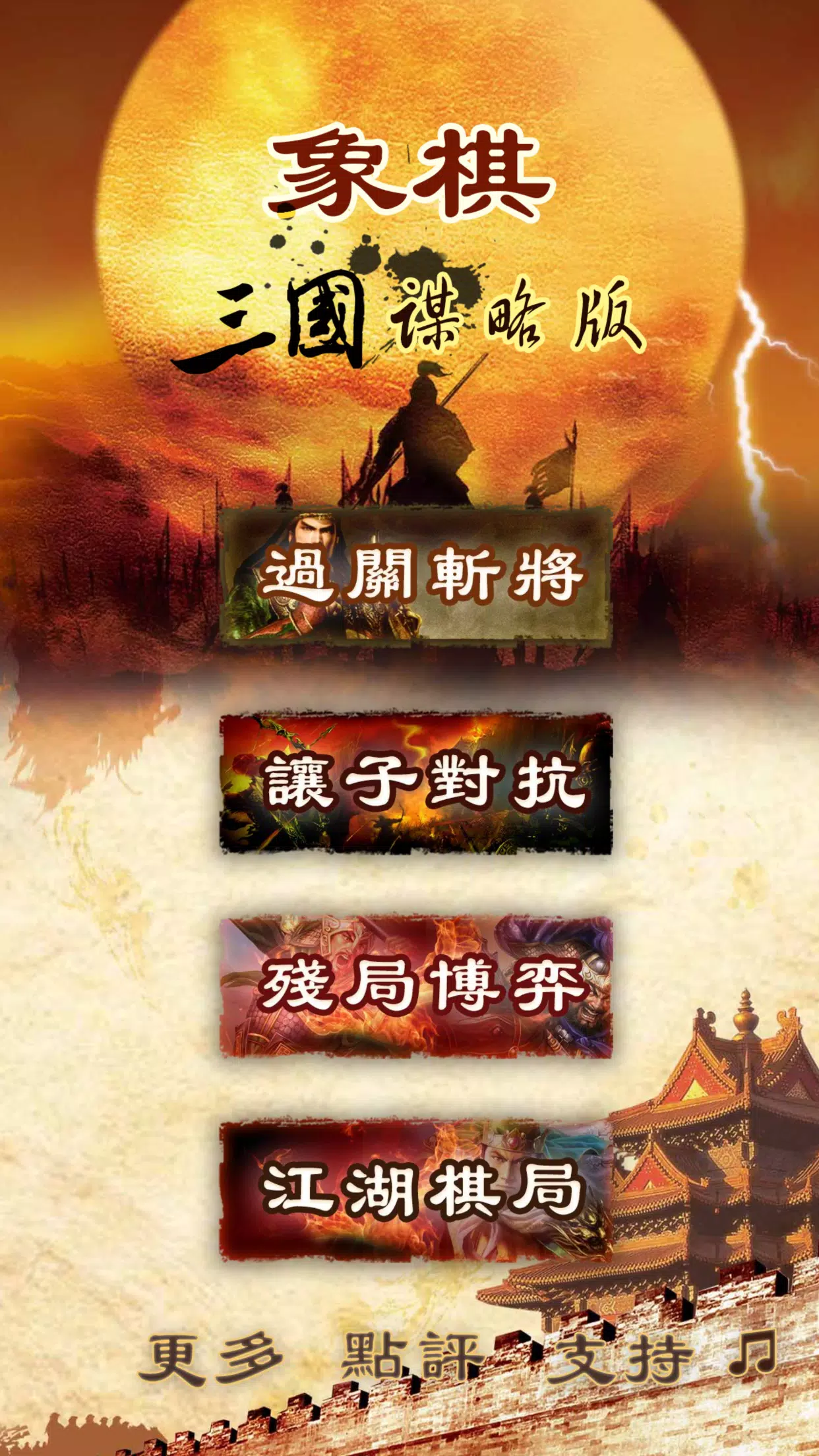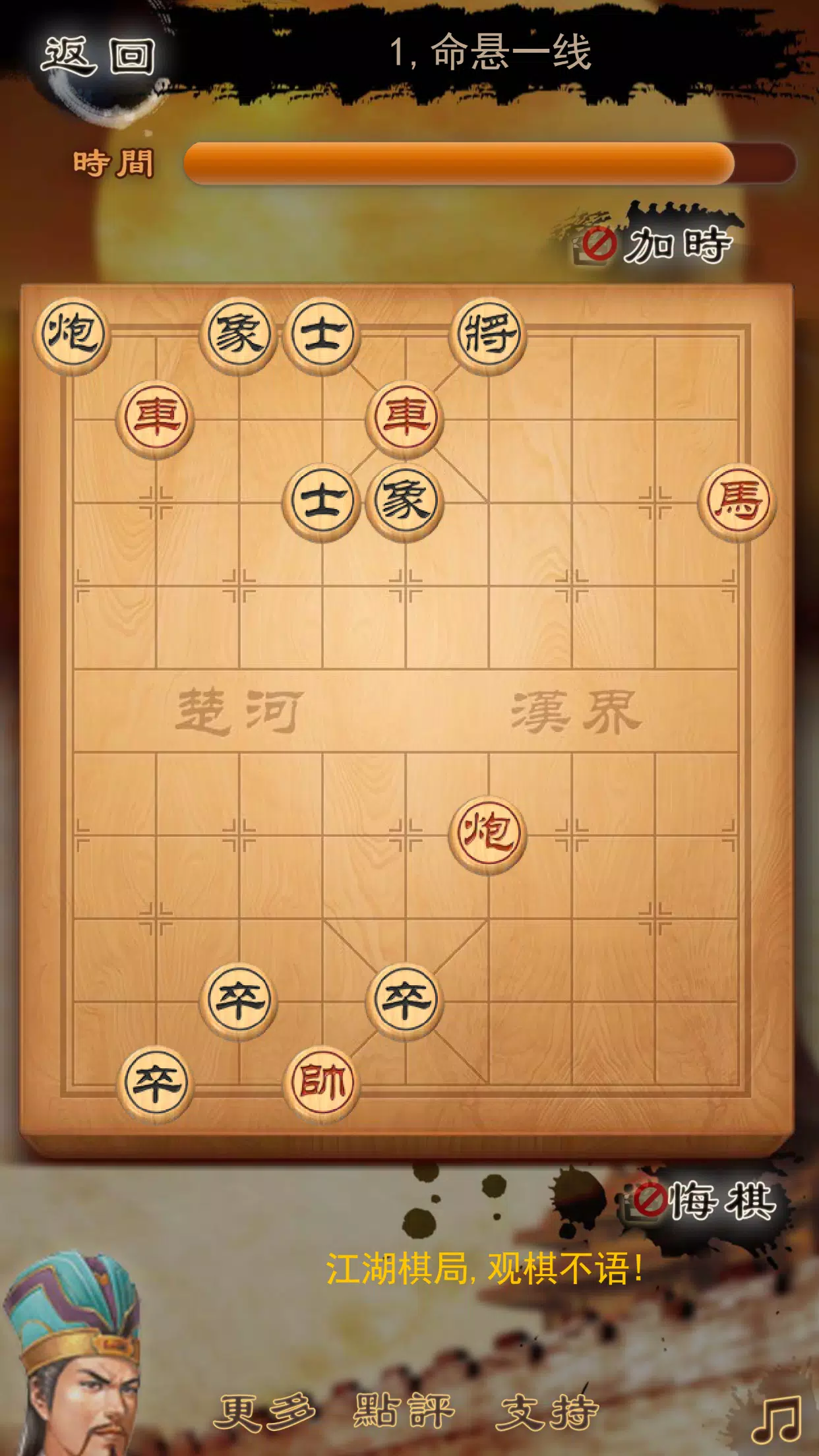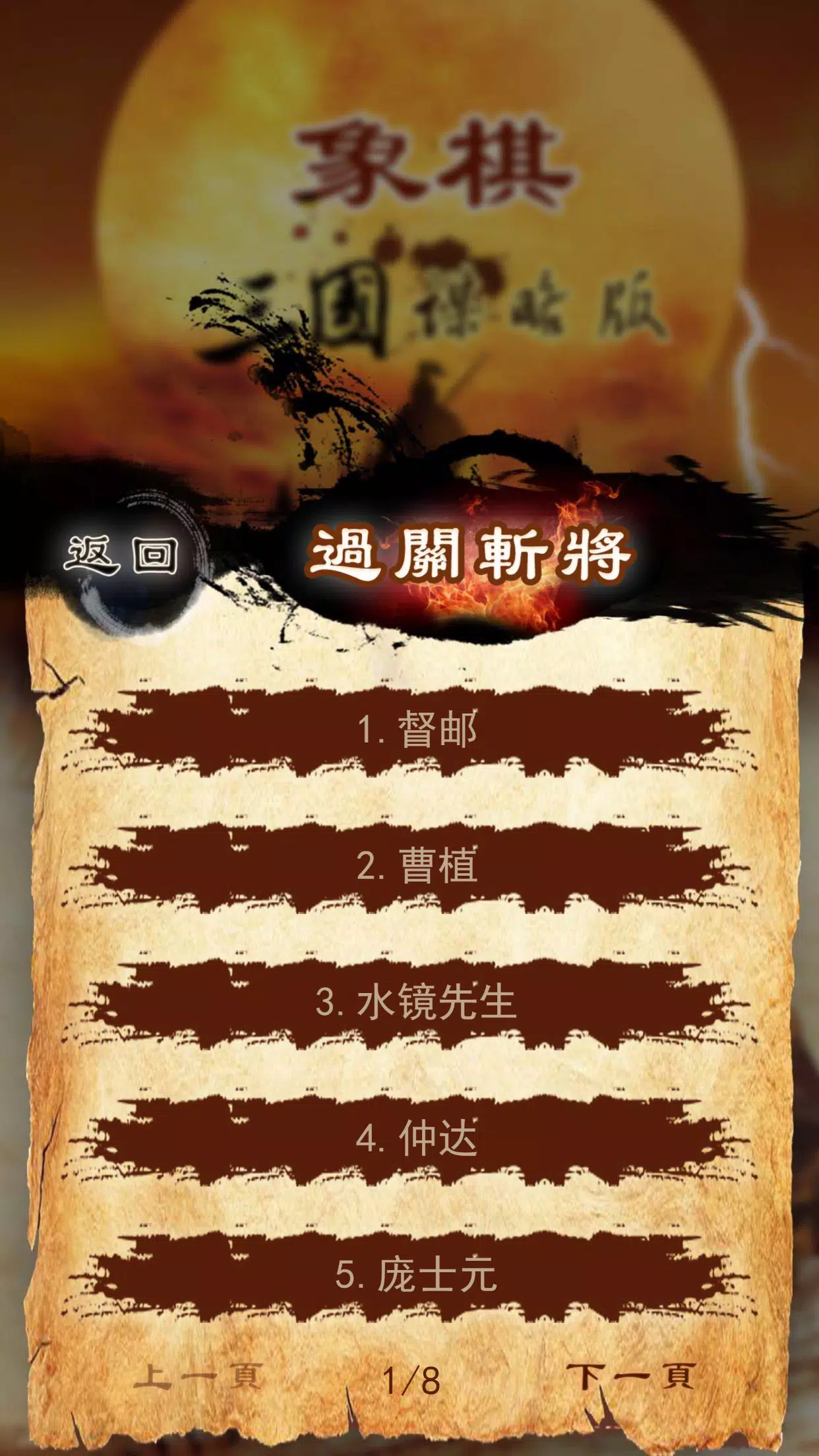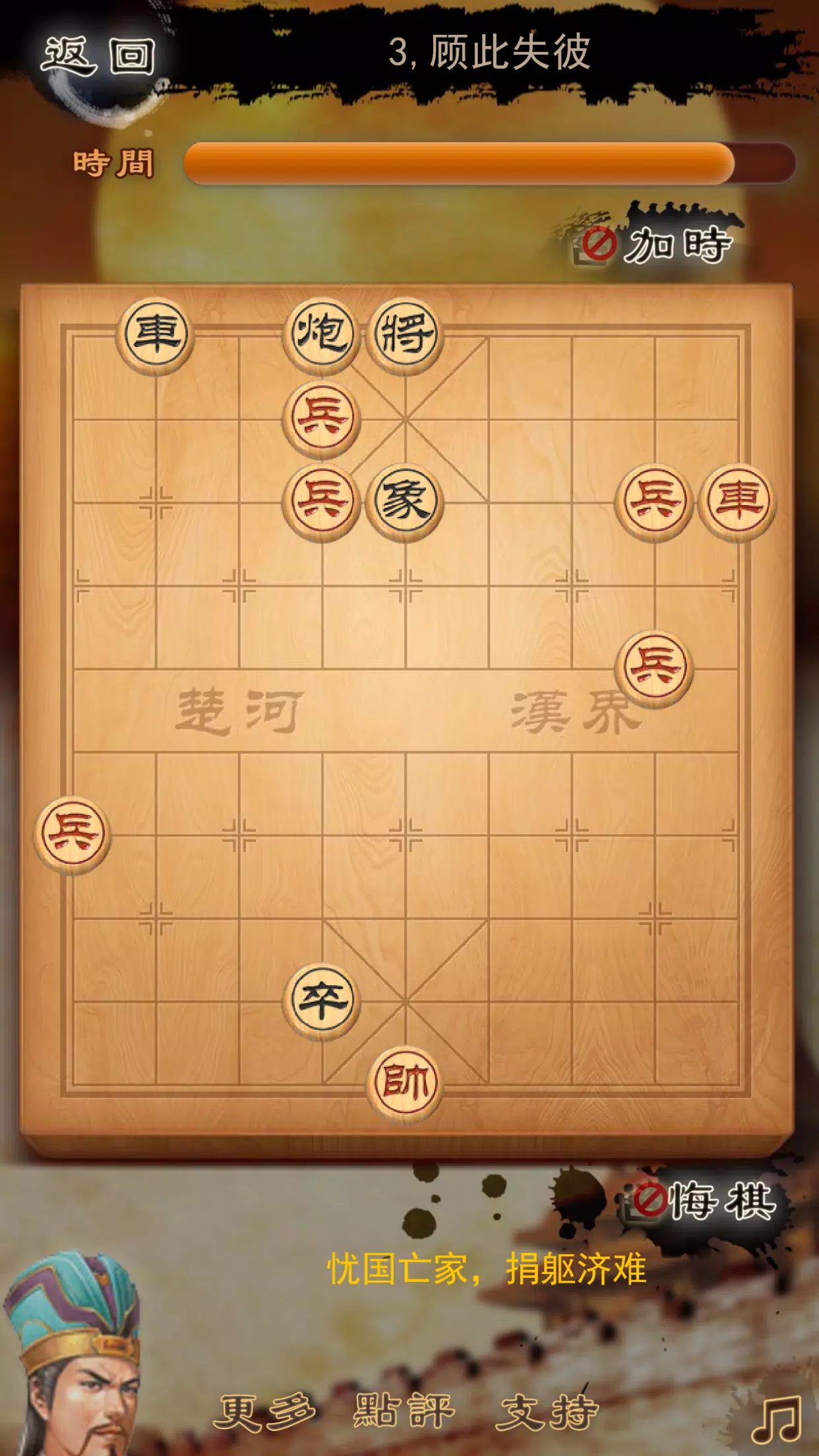Three Kingdoms chess:象棋
Imagine a chess game infused with the epic saga of the Three Kingdoms, offering a variety of gameplay modes that allow you to conquer all levels, challenge every hero, and master the intricacies of chess endgames. Xiangqi, a traditional Chinese chess game, is a two-player strategy game with a rich history. Its simple yet engaging pieces have made it a beloved pastime across generations.
Chess Pieces
Xiangqi features thirty-two pieces, split evenly between red and black teams, with each team comprising sixteen pieces across seven types. Here's a breakdown:
- Red Pieces: 1 General (Shuai), 2 Chariots (Ju), 2 Horses (Ma), 2 Cannons (Pao), 2 Advisors (Shi), 2 Elephants (Xiang), and 5 Soldiers (Bing).
- Black Pieces: 1 General (Jiang), 2 Chariots (Ju), 2 Horses (Ma), 2 Cannons (Pao), 2 Advisors (Shi), 2 Elephants (Xiang), and 5 Soldiers (Zu).
General (Shuai/Jiang)
The General, known as "Shuai" for the red side and "Jiang" for the black side, is the leader and the ultimate target in the game. It moves within the "palace" (nine houses), one step at a time, either horizontally or vertically. The Generals cannot face each other directly on the same file, or the game results in an immediate loss for the moving side.
Advisor (Shi)
The Advisors, called "Shi" on both sides, are confined to the palace and move diagonally, one step at a time.
Elephant (Xiang)
The Elephants, "Xiang" for red and "Xiang" for black, move diagonally two points at a time, known as "flying the field." They are restricted to their half of the board and cannot cross the river. If a piece blocks the center of their path, they cannot move, a situation known as "blocking the elephant's eye."
Chariot (Ju)
The Chariot, or "Ju," is the most powerful piece, moving any number of points along ranks or files, as long as no piece blocks its path. It can control up to seventeen points, earning the nickname "one chariot against ten soldiers."
Cannon (Pao)
The Cannon, or "Pao," moves like the Chariot when not capturing. To capture, it must jump over exactly one piece, friend or foe, a move known as "firing over the screen" or "crossing the mountain."
Horse (Ma)
The Horse, or "Ma," moves in an "L" shape, one point in any direction and then one point diagonally, known as "the horse's day." It can reach up to eight points but cannot move if another piece blocks its initial step, a situation called "hobbling the horse's leg."
Soldier (Bing/Zu)
The Soldiers, "Bing" for red and "Zu" for black, move forward one point at a time and cannot retreat. Before crossing the river, they can only move forward. After crossing, they gain the ability to move sideways, significantly increasing their power, hence the saying "small soldiers crossing the river can challenge the chariot."
Players take turns moving their pieces, embodying the strategic principles from Sun Tzu's "Art of War," such as "winning without fighting" and "subduing the enemy without battle." The objective is to checkmate or trap the opponent's General. The red side moves first, and the game continues until a win, loss, or draw is determined. Through the complex interplay of attack and defense, players enhance their strategic thinking and tactical skills.
Three Kingdoms chess:象棋
Imagine a chess game infused with the epic saga of the Three Kingdoms, offering a variety of gameplay modes that allow you to conquer all levels, challenge every hero, and master the intricacies of chess endgames. Xiangqi, a traditional Chinese chess game, is a two-player strategy game with a rich history. Its simple yet engaging pieces have made it a beloved pastime across generations.
Chess Pieces
Xiangqi features thirty-two pieces, split evenly between red and black teams, with each team comprising sixteen pieces across seven types. Here's a breakdown:
- Red Pieces: 1 General (Shuai), 2 Chariots (Ju), 2 Horses (Ma), 2 Cannons (Pao), 2 Advisors (Shi), 2 Elephants (Xiang), and 5 Soldiers (Bing).
- Black Pieces: 1 General (Jiang), 2 Chariots (Ju), 2 Horses (Ma), 2 Cannons (Pao), 2 Advisors (Shi), 2 Elephants (Xiang), and 5 Soldiers (Zu).
General (Shuai/Jiang)
The General, known as "Shuai" for the red side and "Jiang" for the black side, is the leader and the ultimate target in the game. It moves within the "palace" (nine houses), one step at a time, either horizontally or vertically. The Generals cannot face each other directly on the same file, or the game results in an immediate loss for the moving side.
Advisor (Shi)
The Advisors, called "Shi" on both sides, are confined to the palace and move diagonally, one step at a time.
Elephant (Xiang)
The Elephants, "Xiang" for red and "Xiang" for black, move diagonally two points at a time, known as "flying the field." They are restricted to their half of the board and cannot cross the river. If a piece blocks the center of their path, they cannot move, a situation known as "blocking the elephant's eye."
Chariot (Ju)
The Chariot, or "Ju," is the most powerful piece, moving any number of points along ranks or files, as long as no piece blocks its path. It can control up to seventeen points, earning the nickname "one chariot against ten soldiers."
Cannon (Pao)
The Cannon, or "Pao," moves like the Chariot when not capturing. To capture, it must jump over exactly one piece, friend or foe, a move known as "firing over the screen" or "crossing the mountain."
Horse (Ma)
The Horse, or "Ma," moves in an "L" shape, one point in any direction and then one point diagonally, known as "the horse's day." It can reach up to eight points but cannot move if another piece blocks its initial step, a situation called "hobbling the horse's leg."
Soldier (Bing/Zu)
The Soldiers, "Bing" for red and "Zu" for black, move forward one point at a time and cannot retreat. Before crossing the river, they can only move forward. After crossing, they gain the ability to move sideways, significantly increasing their power, hence the saying "small soldiers crossing the river can challenge the chariot."
Players take turns moving their pieces, embodying the strategic principles from Sun Tzu's "Art of War," such as "winning without fighting" and "subduing the enemy without battle." The objective is to checkmate or trap the opponent's General. The red side moves first, and the game continues until a win, loss, or draw is determined. Through the complex interplay of attack and defense, players enhance their strategic thinking and tactical skills.

